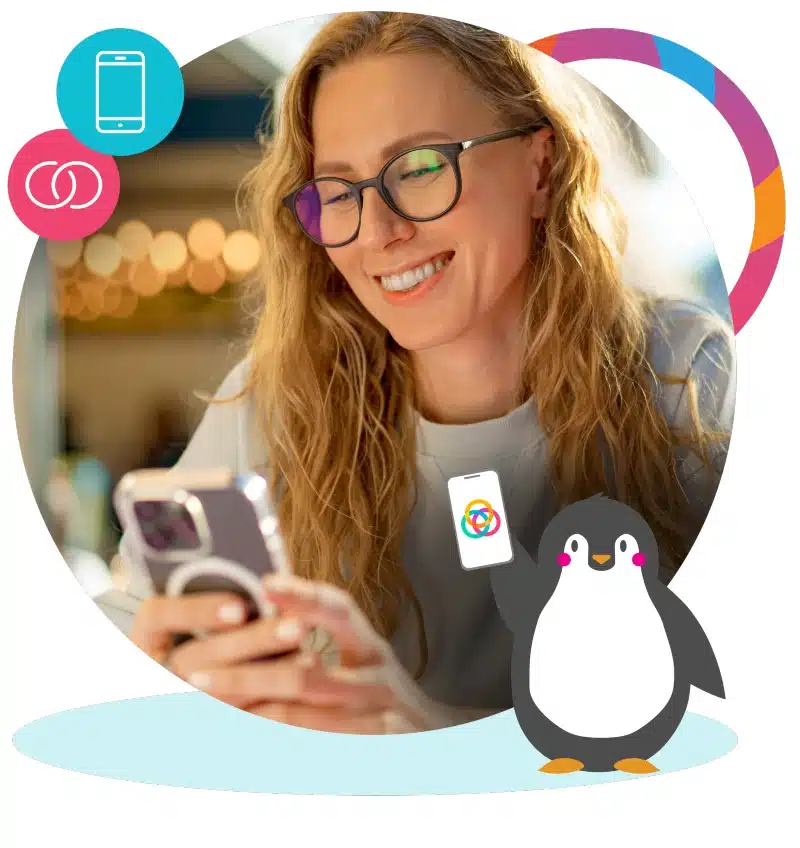A daily schedule for preschool helps children feel secure and understand what to expect and also fosters learning and exploration.
Here’s a comprehensive guide to creating a fun and effective preschool schedule that incorporates key activities like circle time, storytelling and arts and crafts.
The Importance of a Daily Schedule for Preschoolers
“Just like adults, children feel more confident and secure when their daily activities are predictable and familiar. A consistent daily schedule and step-by-step routines give children a predictable day,” says Head Start.
A structured schedule offers numerous benefits for both children and educators.
Children thrive on routine and knowing what comes next makes them feel safe and secure. A preschool daily schedule helps educators manage time efficiently, ensuring all crucial activities are covered.

Tips for a Successful Preschool Schedule
Flexibility
While consistency is key, it’s important to remain flexible. Be prepared to adjust the schedule based on the children’s needs and energy levels on any given day.
Balance
Ensure the schedule balances active and quiet times, structured and free-choice activities and individual and group activities.
Engagement
Keep activities engaging and developmentally appropriate. Rotate toys and materials to maintain interest.
Communication
Regularly communicate with parents about the schedule. Parents can reinforce routines at home, which helps children adapt more easily. Using a child care app to share real-time updates can help immensely with this.
Sample Daily Schedules for Preschool Classrooms
Preschool Schedule Idea #1
8 a.m. – 8:30 a.m.: Arrival and Free Play
Arrival and free play set the tone for the day, allowing children to settle in and engage in activities of their choice. This period helps children transition smoothly from home to school, fostering social interactions and reducing separation anxiety.
8:30 a.m. – 9 a.m.: Circle Time

Circle time is an excellent way to start the day. It provides a communal setting where children gather to share news, sing songs, and engage in group discussions. This activity enhances social skills and builds a sense of community.
Activities:
- Greeting songs
- Sharing news or show-and-tell
- Discussing the weather and calendar
- Introducing the day’s theme
9 a.m.- 10:00 a.m.: Arts and Crafts
Arts and crafts allow children to express their creativity and develop fine motor skills. This hands-on activity can be tailored to the day’s theme, reinforcing learning through creativity.
Activities:
- Painting and drawing
- Collage making
- Clay modeling
- Seasonal crafts such as making holiday decorations
10 a.m. – 10:30 a.m.: Snack Time
Snack time is not only a break to refuel but also an opportunity to teach children about healthy eating habits and hygiene practices. Encourage children to wash their hands before and after eating.
10:30 a.m. – 11 a.m.: Outdoor Play

Outdoor play is crucial for physical development and provides a much-needed break from indoor activities. It’s a great time for children to burn off energy and develop gross motor skills.
Activities:
- Playground games such as tag and hopscotch
- Nature walks
- Group sports such as soccer and relay races
11 a.m. – 11:30 a.m.: Storytelling
Storytelling is a magical way to improve children’s listening skills, vocabulary, and imagination. Choose age-appropriate books that align with the day’s theme or children’s interests.
Activities:
- Reading aloud from picture books
- Puppet shows
- Interactive story sessions where children can participate
11:30 a.m. – noon: Learning Center

Learning centers offer various structured activities focusing on different developmental areas such as literacy, math, science, and sensory play. Children rotate through centers, allowing them to explore multiple activities.
Centers:
- Literacy corner with books and alphabet games
- Math station with counting and sorting activities
- Science table with simple experiments
- Sensory bin with sand, water or other tactile materials
Noon – 1 p.m.: Lunch and Quiet Time
Lunch and quiet time provide a break for children to eat, relax and recharge. After lunch, a short period of quiet time helps children to unwind and prepare for the afternoon activities.
1 p.m. – 2 p.m.: Themed Activity/Free Choice
Themed activity or free choice allows for flexibility in the schedule. This time can be used for special projects, guest visitors or additional free play based on the children’s interests and needs.
2 p.m. – 2:30 p.m.: Music and Movement

Music and movement activities help children develop coordination and rhythm. This fun, energetic session can include dancing, musical games and playing simple instruments.
2:30 p.m. – 3 p.m.: Closing Circle and Dismissal
Closing circle and dismissal is a time to reflect on the day’s activities, share what they’ve learned and say goodbye. It helps bring a sense of closure to the day.
Activities:
- Recapping the day’s highlights
- Singing a goodbye song
- Sharing plans for the next day
Preschool Schedule Idea #2
This schedule shares some commonalities with the one above, but notice differences in activities.
7:30 a.m. – 8 am.: Arrival and Morning Routine
Children arrive and settle in. This time can be used for greeting each child individually to make them feel welcomed, allowing free play or quiet activities as children arrive as well as organizing personal belongings and washing hands.
8 a.m. – 8:30 a.m.: Circle Time
Circle time is a group activity in which children gather to start the day together. Activities may include a morning song or welcome song, calendar and weather discussions as well as being a time when children can express thoughts or feelings.
8:30 a.m. – 9:30 a.m.: Learning Centers
Learning centers allow children to explore different areas of interest. These could include:art and craft stations, building blocks and manipulatives, a reading corner with books and sensory tables.
9:30 a.m. – 10 a.m.: Snack Time

A designated snack time provides a break and essential nourishment. This is a time when you can encourage healthy eating habits and foster social skills as children interact with peers.
10 a.m. – 10:45 a.m.: Outdoor Play
Physical activity is crucial for young children! Gross motor activities such as running, climbing, and playing with balls are wonderful activities, as well as organized games that encourage teamwork and coordination.
10:45 a.m. – 11:30 a.m.: Structured Learning Activities

Focus on cognitive development through:
- Literacy activities like storytime, alphabet games and phonics
- Math activities such as counting, sorting and pattern recognition
- Science exploration with simple experiments and nature observation
11:30 a.m. – Noon: Lunch
A well-balanced meal is essential for energy and growth: Encourage self-help skills by allowing children to serve themselves and promote good manners and social interaction.
Noon – 1:30 p.m.: Quiet Time/Nap Time
Rest is vital for young children’s physical and mental health:
Provide mats or cots for a comfortable rest period and offer quiet activities for children who do not nap, such as reading or puzzles.
Engage children in less structured but still meaningful activities. Here are a few ideas:
1:30 p.m. – 2:30 p.m.: Afternoon Activities
- Art and craft projects
- Music and movement activities
- Dramatic play and role-playing games
2:30 p.m. – 3 p.m.: Closing Circle
End the day with a group activity to bring closure. Discuss what was learned and enjoyed during the day and prepare children for the transition to going home.
3 p.m. – 3:30 p.m.: Dismissal
Ensure a smooth end to the day! Help children gather their belongings and communicate important information to parents or caregivers, which is something you can do throughout the day if your center uses a child care app ….
How a Child Care App Can Help!

Simplicity and accessibility are key to increasing family engagement. And child care apps provide parents with all of the information necessary to help their child succeed.
When parents feel like they are included in their child’s classroom life and able to get the answers they are seeking through the ease of a child care app, family engagement increases and they are more likely to want to stay involved in the future.
The Procare child care mobile app gives you the ability to:
- Get information quickly via an app
- Take the hassle out of check-in/out
- Have a direct mass communication channel
- Keep parents engaged
- Go digital
- Empower your staff
- Collect tuition and payments effortlessly
It saves child care programs time and money by streamlining core administrative functions while raising the bar for the parent experience with professional communications, easy-to-access portals and the ability for real-time updates from the classroom.
Check out this on-demand webinar to learn more about the app and see for yourself what it can do!



